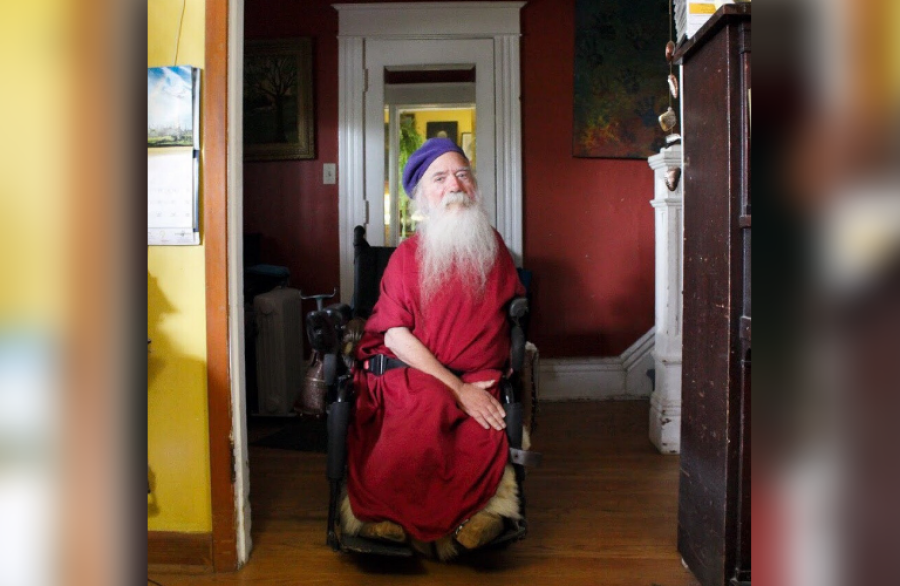When Winnipeg barred pedestrians from using its most well-known intersection, Portage Avenue and Main Street, nearly 40 years ago, Jim Derksen understood right away that his rights had been violated.
“Before the intersection closed, I considered myself on equal footing with people. I could cross where they crossed, and get there at the same time anyone else could,” said Derksen, 71, a pioneer of the disability rights movement who’s used a wheelchair since he was six.
In 1979, the city funnelled pedestrians into an underground concourse and put up concrete barriers where crosswalks had once been, establishing the intersection as a place for cars, not people.
It was closed as part of a deal with developers to create the concourse to connect below-ground malls.
“It was certainly not giving any equal consideration to our needs to move around,” said Derksen of the move. “It was a concession to the cars many of us couldn’t drive, and the busses many of us were unable to use yet.”
That winter, he and other wheelchair users were hoisted over the barricades for a pair of demonstrations, marching around the intersection alongside advocates.
City officials assured the concourse would be accessible and easy to navigate. Derksen had doubts that would soon be confirmed.

As a government employee involved with the province’s disability issues office, which was downtown, he regularly needed to cross Portage and Main for meetings with policymakers and representatives from disability advocacy groups. He often spent 15 minutes going through the concourse before arriving at an out-of-service elevator, then backtracking to the surface to cross at another point. He was often late; the barriers literally slowed his advocacy down.
Things haven’t gotten much better since, said Nate Sawatzky, another wheelchair user who is frequently downtown. “I actively avoid Portage and Main,” he said. The elevators are often under repair, and some shut down at 5 p.m., and on weekends. When that happens, Sawatzky said he is out of luck.
“I’d say it takes me 20 minutes to get through the concourse,” said Zanna Joyce, a downtown-based consultant who uses crutches. “It’d be much faster above ground,” added Joyce, the vice-chair of Functional Transit Winnipeg, a grassroots advocacy group.
In 2014, Brian Bowman promised to re-open the intersection if elected Winnipeg’s mayor. Bowman won, and with the barricades still up four years later, many wondered how Portage and Main would factor into the 2018 civic election.
In July, city council approved an election-day referendum to give voters a say in the issue. Bowman has said if re-elected on Oct. 24, he’ll honour the referendum results. His main challenger, Jenny Motkaluk, firmly opposes pedestrian access, but said she will honour the results, too.
According to a CBC-commissioned poll, two-thirds of Winnipeggers want to keep it closed. Many point to delays in their vehicular commute as a reason for opposition, although a city report concluded that should the intersection open, “the overall experience for drivers will not be significantly different.”
Meanwhile, pedestrians using wheelchairs and mobility aids currently have to take “significantly more circuitous routes” that add four to five minutes of delay. The report’s authors estimate that being able to cross the intersection would reduce their travel time by up to 60 percent.
Derksen doesn’t think those against opening Portage and Main are targeting those with disabilities, but might not be aware of how impactful the move could be for them.
“The price [people with disabilities] pay for [drivers’] quicker passage through the intersection is significant and ongoing,” he said. “If things get left the way they are, the systemic discrimination of our past is maintained. It’s like a continual assault on our rights.”
“[Portage and Main] is an iconic, symbolic place,” he added. “If we don’t take measures to update it according to our new values, in a sense we are re-committing the errors of the past.”















